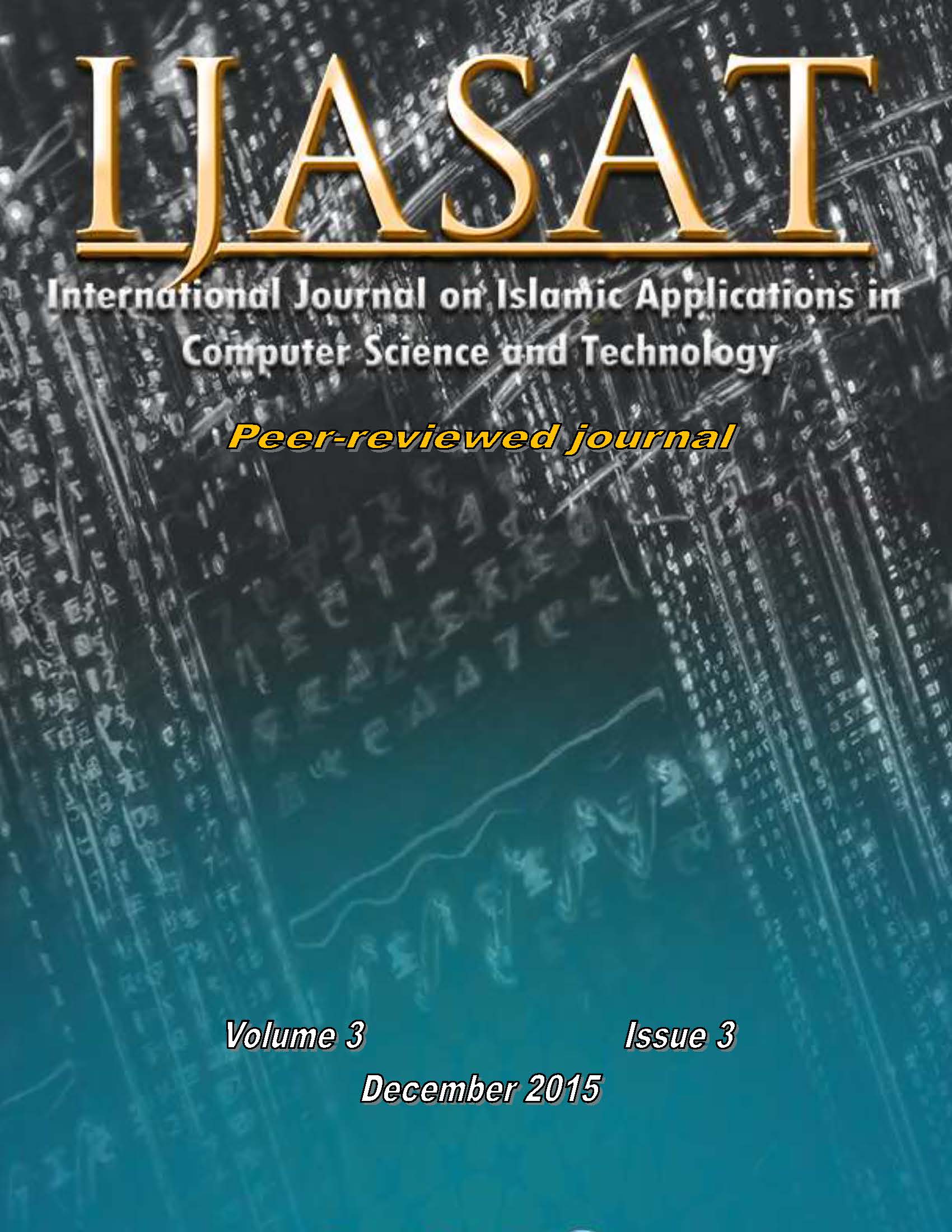Foreword
Abstract
By the grace of Allah, we are at the beginning of the third issue of the third volume of the publication of this Journal: The International Journal on Islamic Applications in Computer Science and Technology.
The success and the welcome of the previous issues of this Journal by researchers from many countries, gave us great encouragement for continuing issuing in the due time. This Journal is aimed at publishing original research papers in the field of Islamic Applications in computer science and technology. This field is catching a momentum in recent years. This Journal is the first International Journal completely devoted for this specific field. As research is growing in this field, we hope that this Journal will be a platform for researchers working in the field to publish their research.
This issue contains four papers. The first paper entitled: Comparing Arabic NLP tools for Hadith Classification. In this paper the performance of different techniques for classifying Al-Hadith Al-Shareef which was analyzed with six Arabic tools (Al-Stem Darwish, Al-Stem Alex, Khoja’s stemmer, Quadrigrams, Trigrams and a disambiguation tool based on AraMorph) is compared. Three classification techniques implemented on WEKA toolkit; namely decision trees (DT), Naïve Bayes algorithm (NB) and SVM algorithm (Support Vector Machines) are compared. The TF-IDF is used to compute the relative frequency of each word in a particular document and the cross validation to evaluate the result of the classifiers. Experimental results show that Khoja’s stemmer outperformed the other tools and that the SVM classifier achieves the highest accuracy followed by the Naïve Bayes classifier, and decisions trees classifier respectively.
The second paper is entitled: Extended Topical Classification of Hadith Arabic Text. This study aims to evaluate the effectiveness of four well-known classification algorithms (Naïve Bayes (NB), Bagging, Support Vector Machine (SVM) and LogiBoost) to classify Prophet Mohammed (Peace and blessings of Allah be upon him (PBUH)) Arabic text sayings into one of five classes (books) ((Ablutions (Wudu'), Fasting, Almsgiving (Zakat), Prayers, and Call to Prayers (Adhaan))). This study is based on (Sahih Bukhari) collection that is considered the first of (The Two Authentic, Bukhari and Muslim) collections. Evaluation results showed that (NB) algorithm is more effective than the other three classification algorithms used in this study.
The third paper is entitled: Natural Language Interface for Quran Knowledge Retrieval. This paper proposes a natural language interface that semantically formulate user’s natural language query either with the presence of ontology concept in the query or otherwise. A system-based suggestion approach is proposed as solution to semantically formulate natural language query when there is no ontology concept in the query. The system is based on using n-gram maximum likelihood estimation to automatically suggest the possible structured query. The proposed natural language interface has improve the effectiveness retrieved result with 0.03 precision and 0.07 recall improvement.
The fourth paper is entitled: Self-Help Maqam-Based Search System. This paper aims at establishing a preliminary work on testing the self-help maqam (personal status based on Islamic principles) based search system resulted from the finite state machine filled by the Seven Maqam as given in Minhajul Abidin of Imam Ghazali. The objectives are: to investigate the use of finite state machine for self-help maqam analysis; assess the relevancy of the texts on Tasawuf against the passing level of the desired maqam; investigate the transition level set as the passing level of the maqam; and make recommendation based on the evaluation of the self-help maqam-based search system. The methodology includes finite state model (FSM), pre- and post- questionnaires with items representing the transitions and passing levels developed in 7 different models and scales. Initial results include the prototype with all the 7 maqams with 7 different models of items, retrieval of items (texts) and maqams, and relevance built upon passing levels at varying degrees.

